2022 | Encounters
Changing Positions
The 15 films in this year’s selection of Encounters bear witness to the urgent need of spaces for dialogue. In the interview Artistic Director Carlo Chatrian and Head of Programming Mark Peranson debate the works of distinctive as well as fresh new voices in filmmaking and cinema’s magical power of teaching new languages.
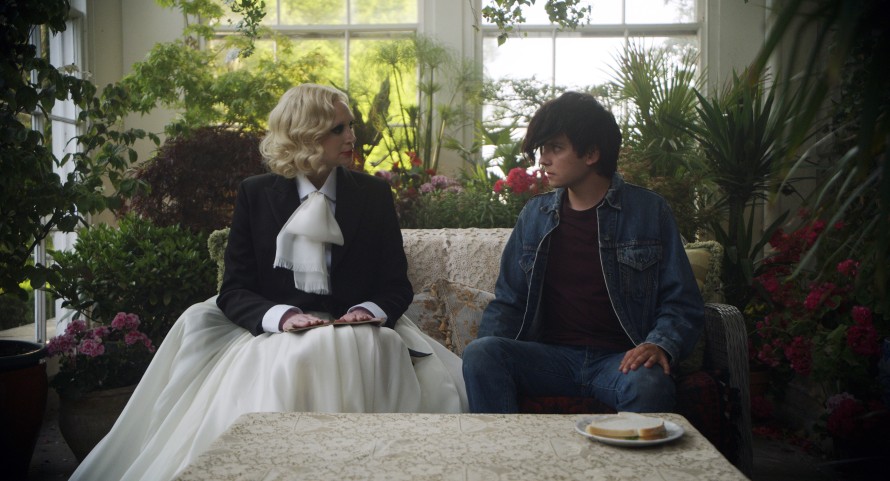
Gwendoline Christie and Asa Butterfield in Flux Gourmet
When taking a look at this year’s Encounters selection, what is striking is the density of more established filmmakers, isn’t this a little unusual for the section?
Carlo Chatrian: Well, I am very thankful for that, and to some filmmakers in particular. Because by accepting our invitation, they help make the section consistent. Encounters is not a section for newcomers only and we don’t want to consider it to be a “second Competition”. The film by Bertrand Bonello, Coma, Flux Gourmet by Peter Strickland or Gastón Solnicki’s A Little Love Package – just to name a few - contribute to create a very strong field that nevertheless defies any rigid definition and therefore demands a lot of openness from the audience.
Speaking of Peter Strickland, who has a very peculiar filmic language, and Flux Gourmet, a culinary film dealing with the translation of culture into food into noise – what can the audience expect?
CC: I am always amazed by the way Peter Strickland asks us to very open-mindedly embrace not only what the story is about, but also how this story is told, merging or interweaving different tones. As his new film deals with food and excess, it reminds me of Rabelais. Flux Gourmet combines High Culture – contemporary art – and Low Culture – food and his consequency on human body – navigating between conceptual and quite mundane sequences. This has a hilariously funny aspect to it.
Mark Peranson: That is true. If you look at his career trajectory, Peter Strickland basically has become one of the strangest comedic filmmakers working today, always using some elements of genre in an unexpected way. If you read the synopsis of Flux Gourmet, it is almost impossible to know what you’re going to get: Why would anybody want to make this film? And: is it gonna be funny or not? It’s a very unique film.
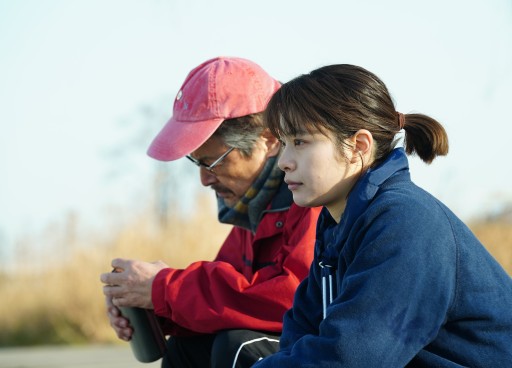
Tomokazu Miura and Yukino Kishii in Keiko, me wo sumasete (Small, Slow But Steady)
Then there’s Keiko, me wo sumasete (Small, Slow But Steady) by Shô Miyake, beautifully filmed in 16mm, which revolves around the story of Keiko, a deaf professional boxer. What kind of role does the sound design play in this film?
CC: The sound design in Keiko is very important, it is not just mere decoration. Some scenes are based on that, for example, when the main character is practicing with her coach and the sound of their boxing gloves creates a rhythm that structures the whole sequence. Centering on a deaf protagonist entails some decisions in terms of “mise en scène”: sometimes the sound becomes visible and audible, sometimes it is just visible, this way sliding in and out of a subjective perspective and connecting the viewer with the protagonist.
MP: What I also find highly interesting about the film is that when you enter the film without any preconceptions, you could see it as either a fiction film or a documentary. In fact, you can never be sure. Maybe it is because nothing really feels imposed in terms of the performance and the characters of the film, it all comes naturally, really organic. Also the way the Japanese boxing community is portrayed and how Tokyo as the locale of the story is filmed. You don’t feel like you’re in contemporary Tokyo, because the story is set in areas where films aren’t being shot these days.
The aforementioned Coma works completely different and is yet another film that defies any categorisation. It is one of the few films in the selection that tackles the theme of the pandemic kind of head-on…
CC: Not according to the filmmaker! But I think we all agree, that the pandemic is visible in the film anyhow and despite the intention of the filmmaker.
MP: I don’t know how you can see the film and not think of the pandemic. But I also understand what he’s saying as the film is really about the imagination of the main character, who happens to be his daughter. He tries to place himself in the mind of his child. Imagination is something that we need more when we’re stuck in physical or virtual rooms all the time, but this is not limited to pandemic settings. You can use your imagination when you're anywhere, at school, at work, when you go to the cinema, when you are sitting at home by yourself – whether it takes place during a pandemic or not is kind of irrelevant for Bonello, and I understand that kind of argument.
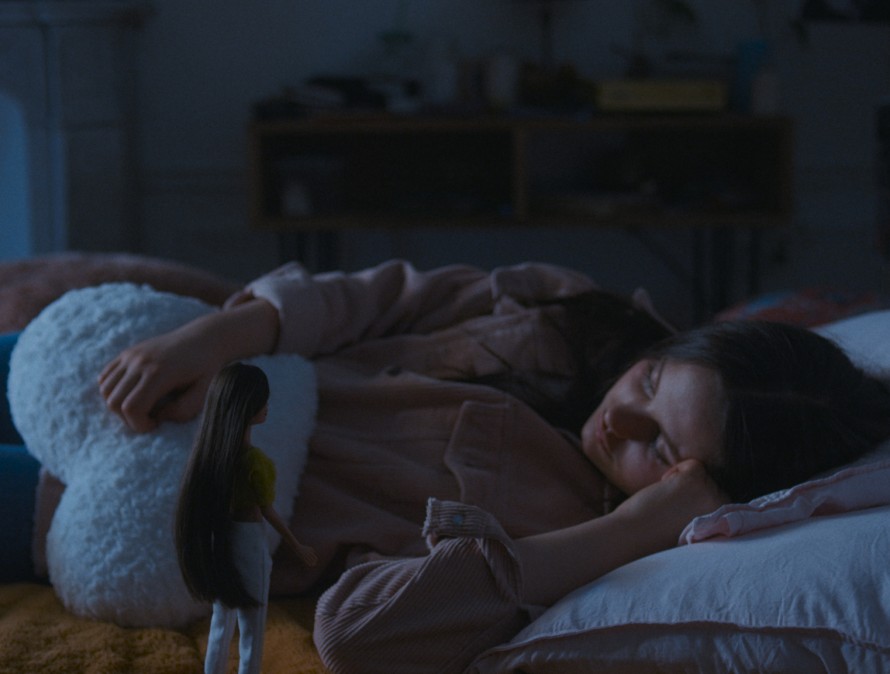
Louise Labeque in Coma
That is intriguing. Focusing on the aesthetic of Coma, you can detect a lot of different styles, there’s for example animated scenes, surveillance camera footage, social media references, stop-motion and phantasmagorial nightmare sequences. How does this piling-up of styles and filmic expression work within the film?
CC: Just like in his last works, Bonello is interested in the way young people see and want to take hold of the world. He is using different techniques to express the overwhelming feeling of having to deal with a huge amount of information. The stratification sets the tone of the film, which sometimes moves in the realm of a home movie and at other times switches between horror and comedic themes. Probably this film will resonate totally different in three years’ time. It asks the viewer to constantly change their position, which is one of the elements we want to achieve with Encounters.
Looking at another work that is challenging us while watching, as it moves through very different spaces, namely the city of Vienna and Andalusia’s landscape, Gastón Solnicki’s A Little Love Package: what does it tell us about these places, that have a somewhat anachronistic quality about them?
MP: Well, you could say it’s anachronistic, but I think the proper term would be “Viennese.” Because I don't think Gastón Solnicki is imposing anything onto Vienna, this is an interpretation which Vienna puts upon itself. The interesting thing regarding Vienna is that the only way to shoot it that deserted is during a pandemic. In a way, that is the magical element of the film: that city without crowds. Solnicki has shot before in Vienna and this one is some sort of homage to a place that is dear to his heart.
CC: The anachronistic feeling might also arise because the starting point of the film is the smoking ban in Vienna. There is always a nostalgic element in the end of an era, which resonates a lot with the pandemic, since it accelerates such developments. And I agree, the concept of home and an analysis of family is something very relevant to Solnicki; both are also seen in his other films, many of which take place in his home city of Buenos Aires.
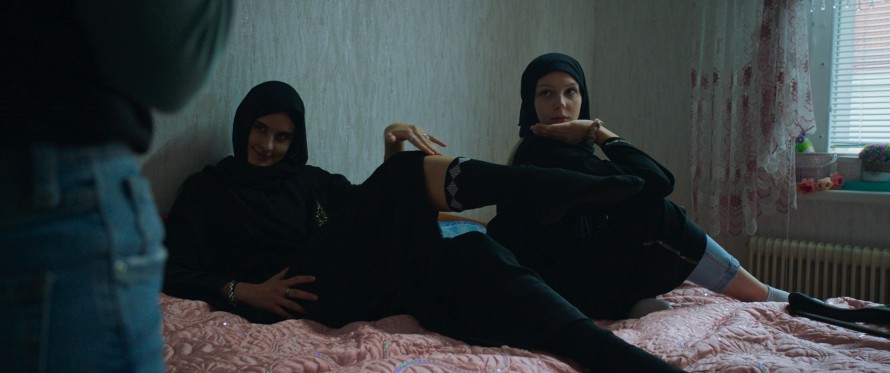
Law Wallner and Maya Wopienka in Sonne
When thinking about the topic of home or “Heimat”, this is prevalent in another Austrian take, which is Sonne, the debut feature film by Kurdwin Ayub. Her first filmic endeavour has been a documentary, Paradies! Paradies! (2016), which already focused on the theme of home and belonging. Is Sonne the further development of that thread?
CC: I’m not sure if Sonne is really about “Heimat”. I felt the family element more present, which is translated in the film as the limitedness and therefore claustrophobic feeling of the apartment, where it is set. The narrowness of this space accentuates the conflicts within the family, which are also related to the question of identity: How much do I identify myself with a subculture, living in a country with another dominant culture? A further thread is the generation issue, highlighted by the access to social media, which is used by the film to get into the perspective of its young protagonists.
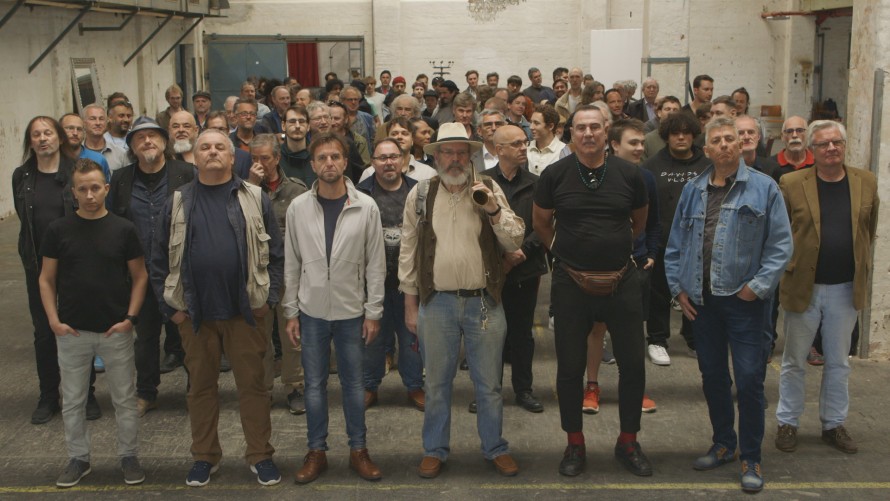
Protagonists in Mutzenbacher
Another film from Austria, a documentary format, also investigates questions surrounding culture and society, Ruth Beckermann’s Mutzenbacher. Beckermann is known for her political films, how does she go about it in her latest work?
CC: Ruth Beckermann takes a very controversial book, the erotic novel Josefine Mutzenbacher, written more than a century ago, as her point zero to ask questions about a collective identity. How do we deal with this novel, how do we deal with images, that were not permitted and even nowadays can raise unpleasant thoughts or, on the contrary, can be the vehicle of a liberating process from moral constraints? And by looking at these topics, something about the Austrian society, about identity and culture is revealed.
MP: Yes, but it is especially a masculine collective identity she is highlighting. There's only men in the film…
…and Beckermann herself, asking the questions…
MP: Yes, there’s men in front of the camera, there’s a woman behind the camera. And that’s the dynamic, which is established from the beginning, and which never variates. Men from different generations and sexual orientations reacting to the material and to each other. The staging adds depth to it, through the way the men are placed – sometimes like in a therapy session.

Journal d’Amérique (American Journal)
There's another documentary approach connected to the past in Journal d'Amérique (American Journal), where Arnaud des Pallières takes private archival footage and assembles it with reflecting intertitles. At one point a title reads, that this film “is mine and is not mine” – how can that be interpreted?
CC: What is addressed here is the question of the author. Film can be in a sense very dictatorial and has means to easily impose a certain ideology, which Arnaud des Pallières, like the other filmmakers in Encounters, tries to evade. His film demands an active viewer. In combining material that already exists with something he creates, he develops a filmic narrative of the 20th century that paradoxically belongs to us and doesn’t belong to us at the same time, as it also asks how we deal with our personal memory.
The third documentary form in the selection, À vendredi, Robinson by Mitra Farahani, is focusing on a correspondence between the two filmmakers Ebrahim Golestan and Jean-Luc Godard. What can we learn from their virtual interaction?
CC: What is special about the kind of dialogue – and the dialogic form is very present this year in Encounters – these two old-aged artists are engaging in, is the playfulness with which it is maintained. Of course, what we hear are also words of wisdom, but it is about the pleasure of playing with your own image, too. It can be both compared to a game of chess and to old men playing a video game with images and words, which is intensified by the isolation due to the lockdown.
MP: What connects this film to our pandemic reality is the way people are conscious that they are entering into a virtual interaction and how different pre-assumptions are drawn into this. Godard, in particular, clearly wants to be in control of the images being produced and the way he comes across in these virtual dialogues – and somehow this is something we can’t help but consider in our everyday video conversations and Zoom calls as well.
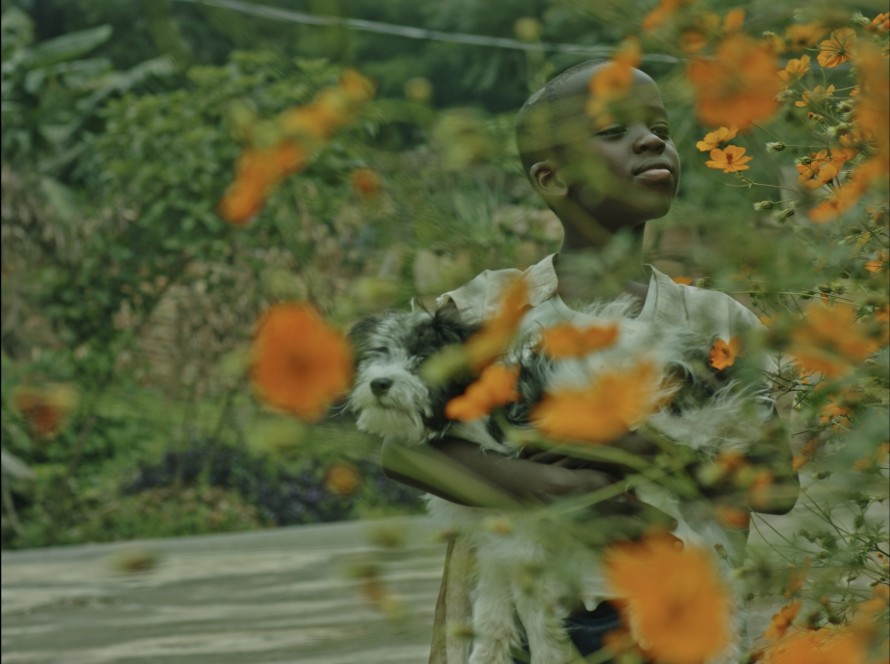
Cedric Ishimwe in Father’s Day
Another film dealing with human relationships and interactions is Father’s Day by Kivu Ruhorahoza, connecting different storylines, placing brutality and empathy side by side. Where does the film get its momentum from?
CC: Well, on the one hand Father’s Day evokes Rwanda’s past in a sense that it hovers over each frame, the inherent violence is insisting strongly. On the other hand, the way Ruhorahoza works with style, especially with locations, demonstrates great inventiveness and a fresh approach. There are a couple of scenes that are, for me, unforgettable in terms of humiliation, which is something that is not easily reproduced in fictional cinema.
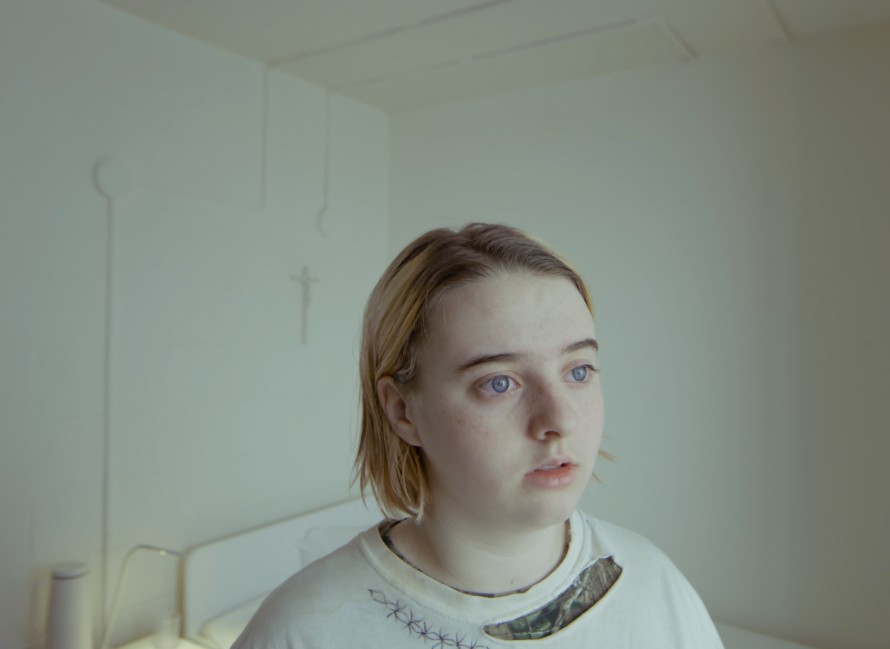
Sarah Walker in Queens of the Qing Dynasty
Like Father’s Day Ashley MacKenzie’s second feature Queens of the Qing Dynasty is very close to its protagonists, following them trying to find a way to communicate – how is the film conversing with its audience?
MP: I don’t really think that the film is that concerned with communicating with the audience in a typical way: it is very insular. The way the stylistic elements of the film are arranged is intentionally anti-heteronormative. Clearly you see that in the characters, but I’m talking about more than just sexuality or sexual orientation. Queens of the Qing Dynasty does all these things you wouldn’t normally do in a film, like putting a camera extremely close to a protagonist for them to be seen fragmented for half of the time. But for me the originality of the film lies in the fact that despite all these things that “aren't supposed to be this way”, when you trust these characters, they all fall in place in the sense that you come to understand them and how the friendship between them develops. And just like them you have to trust the filmmaker proposing things you’re not used to. And maybe, by the end of the film, you'll come to understand a different language, even if you haven’t spoken that language before – and that is something that we can't really do in life, but what we can do in cinema.